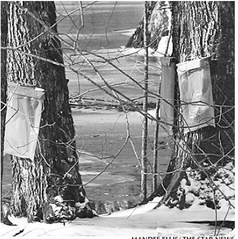Proposed septic loan program an example of good government
There is nothing exciting or sexy about private onsite wastewater treatment systems (POWTS).
No one brags about how efficient their new mound system is, or the great deal they got on their holding tanks. While there may be plumbers and septic waste haulers who keep up on the latest designs and industry trends, POWTS don’t have the same glamour as cars or boats.
Despite their lack of prestige, POWTS are an essential part of living in areas without municipal sewer systems including the vast majority of rural Wisconsin. POWTS are residential workhorses which, if installed properly and adequately maintained, will provide years of worry-free use.
A failing or improperly installed POWTS can not only present a nuisance with smells and back-ups, it can also create a public health hazard as untreated waste water can contaminate nearby wells and surface water.
In recent years the state government has recognized growing concern over groundwater contamination and has pushed counties into enforcement of administrative codes governing POWTS. In general this is a good thing, after all no one wants to worry that their well water or the lake their grandchildren swim in may be contaminated.
The challenge is that repairing or replacing POWTS can cost homeowners significant amounts of money with the range going as low as $3,000 and up to $20,000 depending on the size and type of system.
Cost is a barrier to homeowners getting the needed work done. This is especially true for those on fixed incomes, but whose asset levels do not allow them to qualify for state assistance programs.
For the past year a county ad hoc committee has been working on a way to help make it easier for residents to pay for septic repairs and upgrades. What they came up with is a loan program that will finance the work and set up a repayment schedule.
The program is a win/win scenario for residents and taxpayers. Residents benefit from having access to alternative financing. Taxpayers benefit from eliminating potential contamination points and keeping property values higher. The county is protected because it can collect the amount owed through a special tax assessment on the property.
The current plan calls for using contamination clean-up funds as the seed money for the program. While this is a good initial source of funding, the county should also pursue partnerships with private financial institutions in the form of a participation pool where financial institutions could contribute into the fund which then lends to the county at the lower municipal rates. The interest/ fees collected by the county would go to pay off the money borrowed and cover the administration costs for the county. This type of public/private partnership would be an ideal way of keeping the program going for years to come.
Members of the ad hoc committee deserve praise for coming up with an innovative solution to the challenge of protecting Wisconsin’s ground and surface waters. The full county board should act quickly to approve the loan program so that it can be up and running before the spring construction season.


